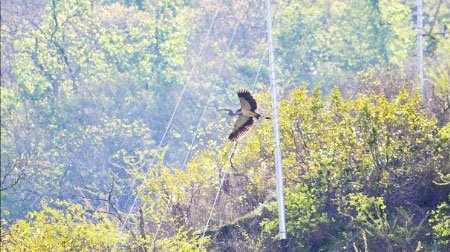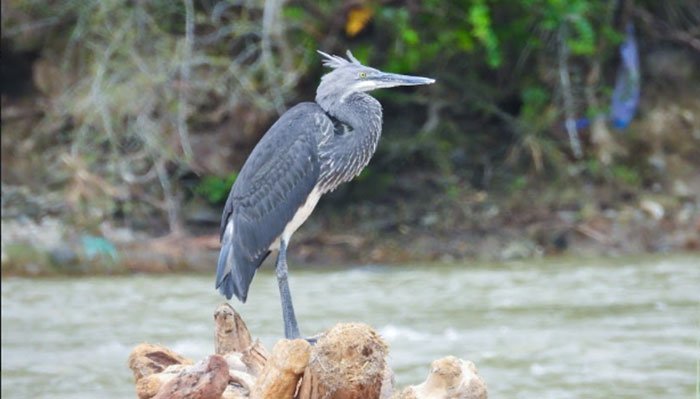But numbers are insignificant to achieve stable wild population
Choki Wangmo
In 15 of the 41 priority zones, Bhutan recorded 27 white-bellied herons (WBH) this year, an increase by two individuals from the previous year.
Nineteen birds were found in the Punatsangchhu basin, seven in Mangdechhu basin and one in Kurigongri basin. The highest number of five individuals was reported from Tsaidang in Zhemgang.
The 18th WHB population survey from February 27 to March 2 confirmed 24 adults and three sub-adult individuals along Punatsangchhu, Mangdechuu and Kurigongri basins, spanning more than 400 kilometres.
Population size reflects the combined outcome of three demographic processes: reproduction, survival, and movement.
Two live nests with three eggs each were sighted in Punatsangchhu and Mangdechhu basins during the survey.

While the increase in the population of WBH this year is a positive sign, the chief of research with the Royal Society for Protection of Nature, Indra Acharja, said, the rise in numbers was not significant considering the population size required to achieve stable wild population. “This still shows lots of WBHs have disappeared. The size is extremely low and ecologically not at equilibrium.”
Last year, 25 birds were counted and five nestlings fledged in mid-2019. The bird population is still decreasing on average.
Even keeping the flexibility of increase or decrease by 10 percent due to survey errors, the population still remains under 30 and this indicates the need for long-term conservation efforts to save the bird from extinction, the survey report stated.
The report also found significant change in local population demographics in key foraging habitats. The population in older habitats—Phochu, Mochhu, Punakha, Zawa, Kamechhu, Adha, and Nangzhina— drastically declined over the surveyed years.
Since the annual WBH survey population was first started in 2003, the trend shows a drastic rise between 2008 and 2009. Before 2007, Phochhu and Mochhu areas had reported eight WBH but currently no individuals visit the area. The reason is attributed to disturbance due to Punatsangchu hydropower projects.
“From 2009 to 2013, the population decreased from 30 to 20 in the area,” Indra Acharja said.
This year, no herons were sighted in Phibsoo Wildlife Sanctuary, Lamoidzingkha and Hararongchhu which were critical sites for several years. However, there were no conclusions about the change in population due to lack of conclusive studies on movement and migration of the species.
“We know WBH moves from one feeding habitat to other but maybe they move from basin to basin too,” Indra Acharja said.
WBH is critically endangered under the IUCN Red List of threatened species and is listed under Schedule I of Forest and Nature Conservation Rules and Regulations 2017 in the country.
Bhutan today has 45 percent of WBH global population, which is estimated at 60.
The extremely low and shrinking population of WBH across the region can be attributed to human exploitation and disturbances in riverine habitats.


